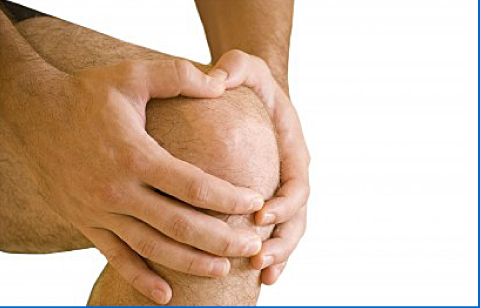Ligament injury
Ligaments are strands of tough tissue that connect bones to each other and provide stability and strength to a joint. Stability of the knee is achieved mainly by a complex group of ligaments span across the knee. These main ligaments are:
• Anterior Cruciate Ligament (ACL): It is located in the centre of the knee controlling rotation
and forward movement of the tibia (shin bone).
• Posterior Cruciate Ligament (PCL): It is located in the centre of the knee controlling backward
movement of the tibia.
• Medial Collateral Ligament (MCL): It is located in the inner aspect of the knee
• Lateral Collateral Ligament (LCL): It is located in the outer aspect of the knee
All these ligaments are subject to various degrees of injuries ranging from minor sprain to more serious injuries like complete rupture/tear of the ligament(s). One of the common and more noticeable knee ligament injuries is ACL rupture, explained below. Back...
Anterior Cruciate Ligament (ACL) injury
Anterior cruciate ligaments are usually injured when they are over-stretched during sudden impact accompanied by some twisting motion. We see these injuries frequently in rugby, football, skiing & running sports. The patient may feel a “popping/snapping” sensation at the moment of impact. This is usually followed very soon by swelling around the knee. After the injury and for a while, he/she will experience difficulty walking and painful limitation of the knee movement. On a longer term, the patient is likely to continue with the feeling of instability, or the knee ‘gives-way’.
The diagnosis of ACL rupture is usually made by the sport expert. Clinical tests will be performed by the specialist during the out-patient consultation visit which may reveal the injury. Further investigations (x-ray, MRI scan) are usually needed to confirm the diagnosis as well as to check for any other injuries to the knee (e.g. meniscal tear). Back...
Treatment
The vast majority of ACL rupture needs Reconstruction Surgery. The aim of the operation is to replace the torn ligament with a “graft”. There are a variety of grafts that can be used from the person's own body (like patellar tendon or some of the Hamstring tendons). These grafts are retrieved through small incision. The second part of the same operation involves threading the graft through holes in the shin bone (tibia) and the thigh bone (femur) at the same location of the original ACL. Then the graft is fixed to the bone using screws. In this case, the lost function of the torn original ACL has been replaced with a new one. Mr. Ayoub is using keyhole technique and special instruments designed for this purpose.
After the operation, the patient may stay in the hospital for a day or two. He/she will need a course of physiotherapy and rehabilitation programme to enhance flexibility, strength and stability of the operated knee. This will ultimately aim to return the patient to work, sport and activities of daily living quickly and safely. Back... |



